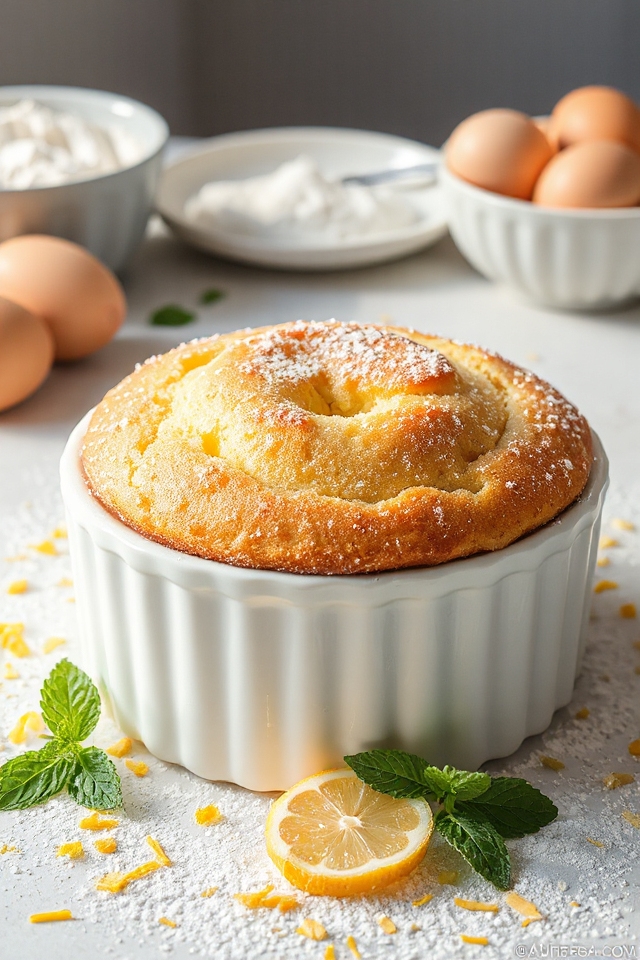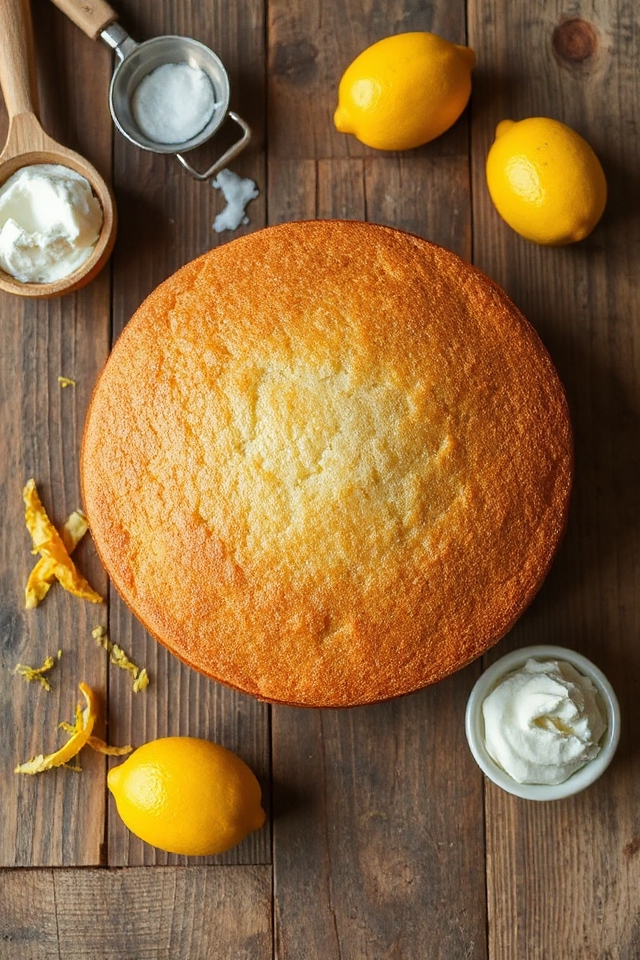Why You’ll Love This Sponge Cake Recipe
When you take your first bite of this sponge cake, you’ll immediately understand why it’s a beloved classic. The texture is light and airy, almost like biting into a cloud. Each slice melts in your mouth, perfectly balancing sweetness with a hint of citrus from the lemon zest.
It’s versatile, too—enjoy it plain, or dress it up with fresh fruit and whipped cream. I love how it’s simple yet elegant, making it perfect for any occasion.
Trust me, once you try this cake, you’ll find yourself reaching for seconds, and maybe even thirds! It’s simply irresistible.
Ingredients of Sponge Cake
When it comes to baking a sponge cake, having the right ingredients is key to achieving that light, fluffy texture that makes this dessert so delightful.
Let’s chat about what you’ll need to gather to whip up this delicious treat. With just a few simple components, you’ll be on your way to creating something truly special. Trust me, it’s easier than you might think, and the best part is, you probably already have most of these ingredients in your kitchen.
Here’s the list for our sponge cake:
- 6 large eggs
- 1 cup granulated sugar, divided
- 1 teaspoon pure vanilla extract
- 1 tablespoon water
- Zest of 1 medium lemon
- 1 cup cake flour
- 3/4 teaspoon cream of tartar
Now, let’s talk about those ingredients a bit more. The eggs are the stars of the show here, so make sure they’re fresh. You want them at room temperature for the best results, which I sometimes forget, leading to a mad dash to warm them up.
And don’t skip the cream of tartar—it’s like the secret agent that helps stabilize the egg whites, keeping your sponge light and airy.
Oh, and the lemon zest? It’s not just for show. It adds a bright note that elevates the flavor, making your cake taste like a sunny day.
How to Make Sponge Cake

Making a sponge cake is more of a delightful adventure than a chore. Trust me, once you get the hang of it, you’ll be whipping up this fluffy wonder in no time.
First things first, preheat your oven to 350°F and grab an ungreased tube pan. Why ungreased, you ask? Well, that’s how we get that lovely, airy rise.
Now, let’s tackle those eggs. You’ll need 6 large eggs, and here’s a little pro tip: separate the yolks from the whites and let them come to room temperature. This step is essential because it helps them whip up to their fullest potential. I’ve been guilty of skipping this step in the past, and let me tell you, my egg whites weren’t impressed.
Once your eggs are ready, sift and measure out 1 cup of cake flour, mixing it with ¼ cup of the 1 cup of granulated sugar you have on hand. This little combo is going to be folded into your egg mixture later, so set it aside.
Now, in your electric mixer, toss in the other ½ cup of granulated sugar along with the egg yolks. Beat them on high speed for about five minutes until they become thick, fluffy, and a lovely pale color. Feel free to dance a little while you wait; it’s a required part of the process.
After that, mix in 1 teaspoon of pure vanilla extract, 1 tablespoon of water, and the zest of 1 medium lemon. The zest is like sunshine in a bowl, bringing a delightful brightness to your cake.
Now comes the tricky part—whipping the egg whites. In a clean bowl, whip those whites until they’re foamy, then add ¾ teaspoon of cream of tartar. Keep beating until soft peaks form. Gradually sprinkle in the remaining ¼ cup of sugar and continue until your egg whites are shiny and have reached stiff peaks. This is where you get to feel like a baking superhero.
Next, you’ll want to gently fold a little of the whipped egg whites into the yolk mixture to lighten it up, and then carefully fold in the rest. Remember, gentle is the name of the game here; you don’t want to deflate your hard work.
Finally, pour the batter into your tube pan, smooth it out, and pop it in the oven for 30 to 35 minutes. When it’s done, let it cool for at least an hour before unmolding, because all good things take time, right?
And there you have it, a delightful sponge cake ready to be enjoyed.
Sponge Cake Substitutions & Variations
Once you’ve mastered the art of making a classic sponge cake, there’s a whole world of substitutions and variations waiting for you to explore.
You can swap out the lemon zest for orange or almond extract for a different flavor twist. If you’re gluten-free, use a gluten-free all-purpose flour mix. For a richer texture, try adding a bit of sour cream or yogurt.
Want a chocolate version? Just fold in cocoa powder with the flour. You can even infuse the cake with matcha or spices like cinnamon for extra flair.
The possibilities are endless, so have fun experimenting!
Additional Tips & Notes
Though baking a sponge cake might seem straightforward, a few tips can elevate your results.
First, make sure your eggs are at room temperature; it helps them whip up better. When folding in the egg whites, be gentle to preserve that airy texture.
I’ve found that using a tube pan improves even baking, so don’t skip that step. Additionally, let the cake cool upside down in the pan to maintain its height.
If you want a flavor boost, consider adding a splash of almond extract.
Finally, store any leftovers in an airtight container to keep it fresh for days. Enjoy!
